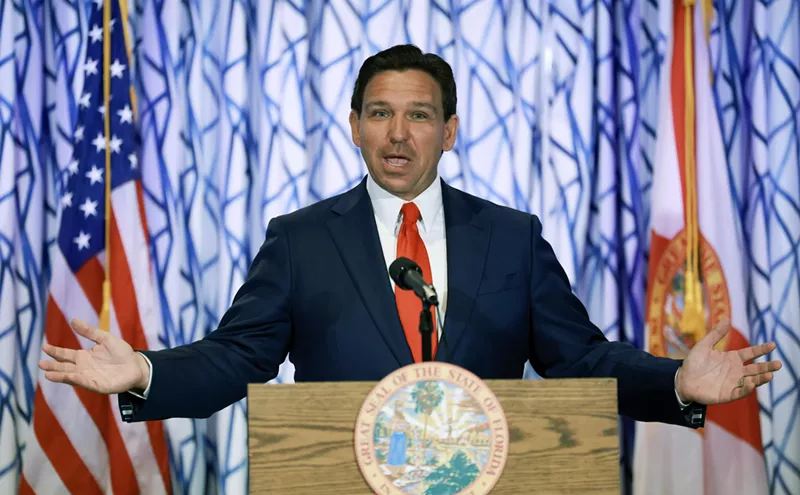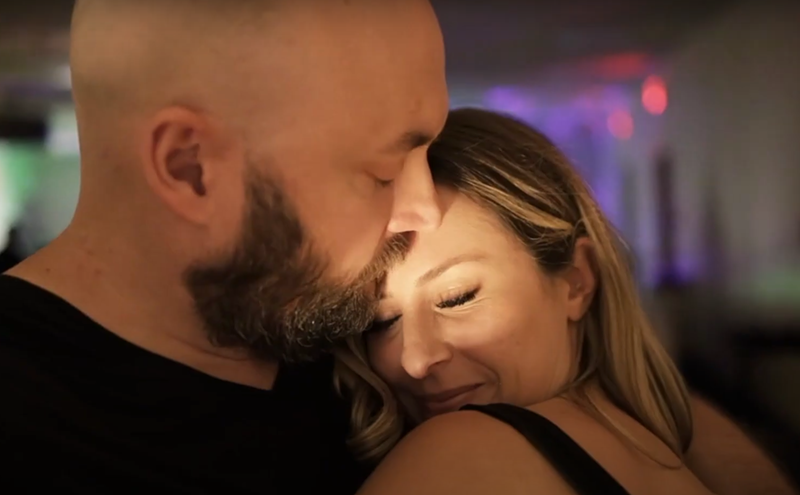Sparks are flying. Jackhammers are blasting. Snakepits of wire cover the floors of the Fontainebleau Hotel. Will it be ready to open November 16, after a three-year, $1 billion makeover?
"Absolutely," says Bryan O'Shields, the hotel's senior vice president of food and beverage.
Echoing his optimism is Sean O'Connell, the property's new executive chef. "Bryan and I opened the Bellagio [in Las Vegas] together in 1998. It had 3,000 rooms and 22 restaurants, so it provided us with quite a bit of experience." The sight of 1,200 workers toiling night and day must also boost confidence.
If a billion dollars seems extreme, consider that the Bellagio bill ran to $1.6 billion (or that it took $200,000 just to spruce up Sarah Palin). And the 'Bleau is, after all, this city's singular, iconic structure. From the time it opened in 1954, through the Sixties, the place epitomized the glamour of Miami Beach and helped cement its reputation as the American Riviera.
High society flocked here, as did Elvis, Judy Garland, Bob Hope, Jackie Gleason, Marilyn Monroe, Marlene Dietrich, and, most notoriously, the Rat Pack. Movies filmed on-site include The Bellboy, The Bodyguard, and Scarface. The most famous scene linked to the property was probably the one in which James Bond and Goldfinger sit by the pool for an intense game of gin rummy in the 1964 flick.
In 1952, hotelier Ben Novack purchased what was then the Harvey Firestone mansion for $2.3 million and hired architect Morris Lapidus to set the design. One morning, on what would be an epiphanous subway ride from Brooklyn to his office in Manhattan, Lapidus envisioned a curvilinear, 11-story structure that would not only add new form to the skyline, but also catch ocean breezes to cool the rooms. The interior was a cascade of floating ceilings, outlandish bowtie motifs, and tall, soaring spaces.
"When we purchased the property, it was solely because we bought into what Mr. Lapidus had created," O'Shields says as he and O'Connell lead a hard-hat tour of the grounds. "We took the inspiration ... and brought that back with enhancements to make it a 21st-century property."
So the bowties, circular ceilings, and columns remain, as does the legendary "Staircase to Nowhere" — which actually led to a coat-check room. Women would take an elevator up the single flight while their gentlemen waited below, and then they'd sashay down the stairway for their Gloria Swanson-style entrance into the lobby. This was in line with Lapidus's intent: "If you create a stage and it is grand," he wrote of the Fontainebleau, "everyone who enters will play their part."
Will the staircase still serve the same purpose in less formal times? "I think it's a great photo op," O'Shields says, "so I don't see any reason why not."
A team of eight international architects, designers, and project managers worked on the 22-acre showplace. The hotel now boasts 1,504 rooms (with a personal iMac in each one), 58 meeting rooms, and three ballrooms. A trio of nightlife venues encompasses what will be the Beach's largest club, the domed LIV (roman numeral 54), located in the former Tropigala space.
Then there's the 40,000-square-foot Lapis spa, with 30 treatment rooms, a pool/lounge area, and water therapy in all of its forms — mist, rain, and steam. It was close to completion on the tour, but a sprawling oceanside landscape-to-be of water walls, cabanas, and cafés was mostly muddy terrain patterned with the motif of empty pools.
Half of the billion bucks went to building two new all-suite towers — the 37-floor Trésor and 18-floor Sorrento — that pair with the refurbished Château and Versailles towers. Lapidus reputedly planned the Trésor shortly before he died — "the exclamation point," he said, to his original vision.
Then there are the property's 11 restaurants and lounges. O'Connell has assembled a talented team of chefs and touts them as we pass each eatery. Alfred Portale of New York City's Gotham Bar and Grill will oversee Gotham Steak, a soaring two-level, indoor-outdoor space with a glistening exposition kitchen that looks ready to go. We gaze up at a large cutout in the ceiling that will soon have a chandelier hanging through it from the top floor.
The frame of a massive glass-enclosed wine tower also stretches two levels, to be stocked shortly with 500 wines (10,000 bottles) from around the globe. The steaks will be dry-aged for, as O'Connell puts it, "a precedent-setting 50 days" (the norm is 30).
The seafood supply for Gotham and the rest of the hotel will come from "an onsite water world: eight aquariums with live lobsters, oysters, clams, fish, prawns — all taken care of by a marine biologist who will check that everything coming in is at peak freshness." Then O'Connell adds the obvious: "This is something that's not done down here at all."
Each restaurant we inspect has at least part of its distinctive design in place. In the case of Scarpetta, likewise a New York import, floor-to-ceiling columns and the airy nature of the space suggest a sophisticated midcentury European look. O'Connell chats about chef Scott Conant, who has been heralded up North for authentic regional Italian cuisine "from locally sourced ingredients."
Vida, which will serve Pan-American cuisine (vaguely from this hemisphere, Florida, and southward), looks as though it could open tomorrow. Banquettes are in place, along with another gorgeous exhibition kitchen, large hearth ovens, and a rustic rotisserie. Foods from the South of France will be featured at La Côte, modeled after sexy La Palmier in Saint-Tropez. Guests will also be able to enjoy tapas-style snacks at the bar. La Côte is located poolside, and we peer at what will presumably be an outdoor patio soon.
A long, sleek contemporary sushi bar has been installed at Blade, and it is clear this space, which also opens out onto the pool area, is going to be dazzling. O'Connell promises "a purist style of sashimi, nigiri sushi, and omakase. We won't be doing cut rolls and all those American-style rolls." Moving on, we come to the bakery and coffee shop, Solo, and try to visualize it overflowing with Old World breads, "artisan cakes, and a chocolate artist who will be pouring his wares."
The real eye opener of this culinary pilgrimage occurs when we arrive at the enormous pastry kitchens that will supply baked goods. The ovens and equipment, all in place, are so up-to-the-minute that there are units I haven't even seen in industry magazines.
None of the Fontainebleau's incoming restaurants is creating more buzz than the stateside debut of Hakkasan — the only Michelin-rated Chinese restaurant in the United Kingdom. Chef Alan Yau will dish what O'Connell describes as "a modern approach to Cantonese cuisine, with a little Korean and some slight Japanese influences."
Is O'Shields concerned about debuting the project during an economic meltdown? "I think anybody who would say they're not worried is fooling themselves and probably not telling you the truth. You operate smarter, you operate tighter, watch your labor closer, and do the things you have to do to ensure you're running an efficient business."
They're certainly not skimping on the grand opening. A half-century ago, 1,600 people attended the hotel's inaugural ball; the big star was the mayor of Fontainebleau, France. This time around, the premiere will be stripped down — as in a $5 million party highlighted by a Victoria's Secret lingerie show November 15. The hotel will open the following day.












